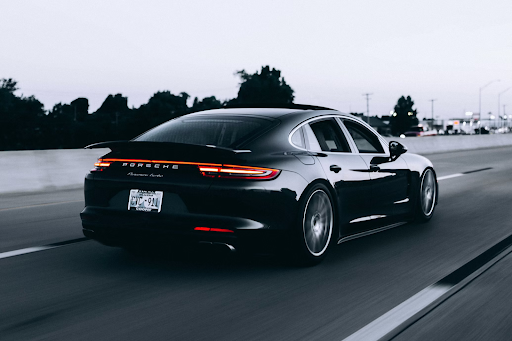People worldwide share a deep love for cars. This passion has sparked the rise of unique automotive subcultures, showcasing wild car modifications and eye-catching paintwork. Despite knowing that some modifications may reduce the resale value, enthusiasts remain unwavering in their dedication to their chosen culture.
 Over the past half-century, an endless array of car cultures has emerged worldwide, each pushing the boundaries of what defines an automobile. We have compiled an interactive map, featuring our very own car culture collection. From American Hot Rods to Japanese Stance cars, you can explore it all.
Over the past half-century, an endless array of car cultures has emerged worldwide, each pushing the boundaries of what defines an automobile. We have compiled an interactive map, featuring our very own car culture collection. From American Hot Rods to Japanese Stance cars, you can explore it all.
Car Culture Around the Globe
The car culture around the world is too diverse to be covered in one article. Everywhere different automotive traditions and cross-cultural comparisons are often simply impossible on a global scale. Only you can analyze global automotive trends and choose what. what’s right for you.
What’s the best way to experience regional car scenes? Join international car communities and watch various shows, both regional and international. For this, you need Virtual Private Networks or VPN. Using VPNs for access to worldwide automotive events, you will get the most real and visual impressions of automotive culture.
The main reason for the appearance of VPN is geo-blocked content. Nowadays, the number of geo-restrictions is greatly increasing, due to which it is impossible to get free online access to streaming services or foreign forums. With the best VPN Amazon Fire TV you can change your virtual location. Using VPN accessibility for car enthusiasts, you can watch the show in Japan first, and then the broadcast of the event in Europe. All this is as simple as if you were really there. For this reason, automotive enthusiasts actively use VPNs.
Muscle Cars
Cars in the United States represent more than mere transportation; they embody freedom and individualism. The American automotive industry has birthed the muscle car, a manifestation of power and speed. Enthusiasts crave the resonating names of Ford Mustang, Chevrolet Camaro, and Dodge Challenger, which evoke roaring V8 engines and the allure of the open road. The profound adoration for customizing vehicles in America has resulted in an abundance of car shows, drag racing events, and a rich car culture.
Bosozoku
The Bosozoku, a form of rebellious expression for Japanese youth, emerged in the 1950s with their unique concept of “running-out-of-control”. These youngsters aim to make a statement and stand out in a crowd by equipping their vehicles with aerodynamic kits that push the limits of their cars’ capabilities.
Raggare
Raggare, a well-known subculture that emerged in Sweden, draws inspiration from 1950s American pop culture and has gained popularity throughout Europe. The culture predominantly revolves around large, classic American muscle cars, featuring V8 engines like the Pontiac Bonneville, Dodge Phoenix, and Buick Roadmaster. Beyond Sweden, this car culture has also made its presence felt in the rest of Scandinavia, Germany, and Austria.
Raggare cars combine elements of original classic American cars and hot rods with a touch of 1950s pop culture. In a 2013 feature on Jalopnik, the car culture was described as follows: “Raggare are members of a subculture in Sweden, situated in between the frozen regions of Finland, Norway, and just above Denmark. They have a penchant for classic American cars, rock music, savoring beer, and embracing the Southern spirit.”
Lowriders
Lowriders, originating from the rich Latino American culture, have gained worldwide recognition as one of the most distinctive car cultures in the USA. These unique vehicles modify their car suspensions by incorporating height adjustable hydraulics, allowing users to effortlessly raise or lower their cars according to their preferences.
True to their name, Lowriders usually maintain a lower stance, setting them apart from other car cultures. Another defining characteristic of Lowriders is their custom paint jobs that often embody the essence of Latino American culture. Popular car choices within this culture include the Chevrolet Impala, Buick Riviera, and Pontiac Torpedo.
Supercars
Some of the world’s most coveted supercars originate from Italy. Brands such as Ferrari, Lamborghini, and Maserati transcend mere automobiles; they embody Italian artistry and passion. Italian car culture exalts elegance, speed, and style. These Italian supercars aren’t just modes of transportation; they represent rolling works of art, celebrated for their design and performance alike.
Hot Rods
Classic American cars, known as hot rods, have a rich history dating back to the 1920s. The term “Gow job” was initially used to refer to this type of vehicle modification in the early days. However, in the 1950s, the term “hot rod” was introduced, marking a shift in terminology. These cars are modified with powerful engines to achieve linear speed.
Rokkiralli
Finnish drivers excel in motorsports, and their secret might lie in Rokkiralli. Rokkiralli, a budget-friendly ice rally series, differs from the extravagant World Rally Championship with its relaxed rules. The price is capped at £560 per car, allowing anyone to participate and ensuring fairness. The main vehicles used in Rokkiralli are Volkswagen Beetles and other hatchback models.
Moreover, Rokkiralli cars exhibit uniqueness. Given the competitive car culture, you’ll frequently witness cars being disassembled and reassembled in various combinations. This race welcomes individuals of all ages, from 16-year-old amateurs to 60-year-old veterans.
Conclusion
Car culture differs from country to country. Some people prefer to tune them, but others love originality. Today there is a demand for both original retro cars and modern supercars or muscle cars. All countries have enthusiasts who love cars and use them according to their culture. Now you know more about the diversity of car culture around the world.










